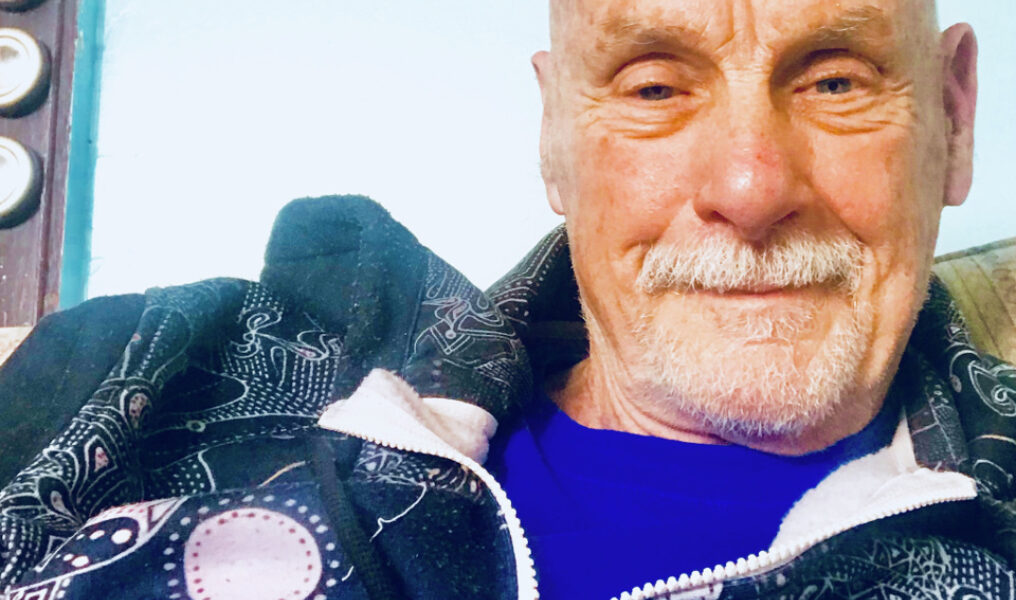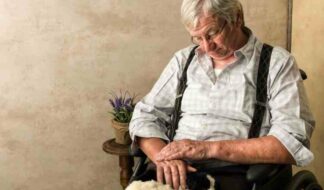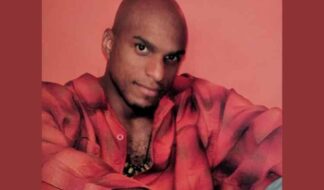I had my picture taken a year ago with actress Lily Tomlin, who was in Detroit — her native city — as speaker for an LGBTQ fundraiser. I was wearing a blue-patterned hoodie I had designed for ArtWear Detroit. And the juxtaposition of my design wear and Ms. Tomlin's vivid popularity was good PR. (For both of us I like to think.)
I took the opportunity of the photoshoot moment because of a kinship we share. Both are Cass Tech High School grads. Lily, in the performing arts curriculum, and I in commercial arts.
Among Detroit artists there are many CT grads, including Alvin Loving (a classmate of mine), Gilda Snowden — who, sadly, unexpectedly, died five years ago. Gilda was the well-known painter and College of Creative Studies teacher/mentor to hundreds of students in her tenure at CCS.
And perhaps the most famous Detroit African-American artist, with a national and international reputation: LeRoy Foster. He graduated from Class Tech in 1943. Known today, as "The Michaelangelo of Detroit Artists," I met LeRoy when I was 19 in 1955 and sadly by chance during the last years of his life in 1992.
In the '50s, LeRoy Foster's studio was located in an upper flat on Woodward Avenue in Midtown Detroit. His studio was a few blocks from the famed Paradise Theater that brought top black musicians, bands and singers to Detroit. My friend Jack Jacobs who was a longtime friend of Foster's, invited me to attend LeRoy's 30th birthday studio party.
"His birthday's May 8th. Yours is the 12th. How every appropriate," winked Jack.
When I was introduced to Foster I told him our birthdays were just four days apart Foster — who was openly gay at a time when so few dared to admit to being homosexual — quipped, "That's understandable kid. Taurus is the sure sign of two-spirited artists." We spent several minutes chatting "knowingly" about CT teachers, and my gay, song-and-dance homeroom teacher for three years, Lawrence Timothy Ray.
At the time, LeRoy Foster's studio was located in an upper flat on Woodward Avenue in Midtown Detroit. His studio was a few blocks from the famed Paradise Theater that brought top black musicians, bands and singers to Detroit. Jack, who was a longtime friend of Foster's, invited me to attend LeRoy's 30th birthday studio party.
As I recall, Leroy's birthday celebration was filled with a diverse group of artists, musicians, and two very hefty twin sisters who sang along with an LP recording of Ella Fitzgerald songs. Attending also were two CT recent grads and straight friends of mine who went on to make names for themselves as gifted artists: Carol Wald and Alvin Loving.
LeRoy was very outgoing and physically in superb shape. He looked not unlike his famous painting — and perhaps masterpiece — of Frederick Douglass. (One of his more recent versions of the heroic Black Civil War contender is now on permanent display in the Detroit Frederick Douglass Public Library.)
Accolades for LeRoy Foster are many. Born in Detroit in 1925, he began drawing at age five.
"I was nice up until I was 12," he once remarked to the press. "Then all hell broke loose. I was possessed by demons, and one way to exorcise those demons was to paint."
In 1939, at age 14, he won first prize at an exhibition sponsored by the Pen and Palette Club, a training and studio space for black artists sponsored by the Detroit Urban League. He was then its youngest member. He later studied at the Society of Arts and Crafts (now the College of Creative Studies) with famed painter Sarkis Sarkisian.
Following this, Foster spent time studying in Europe, at the Academie de la Grande Chaumiere in Paris, and the Heatherley School of Fine Art in London. He painted portraits of prominent figures including that of singer and civil rights activist Paul Robeson. A good and close friend and patron of Foster was LGBTQ activist Ruth Ellis. (She lived to be 101, and she owned a portrait of herself done by Foster that stayed in her home until her passing.)
Comments Wikipedia: "He came to be known around the city as an artist with a mastery of human anatomy, an excellent portrait painter, and perhaps most widely acknowledged, a public muralist with a commitment to African-American history and culture."
In February 2014 Hour Magazine did an excellent, full-length, in-depth article on LeRoy Foster. ("Bigger than Life," can be accessed online for reading and I'm pleased to be quoted in the article.)
LeRoy Foster died on March 23, 1993. He was 67. I chanced to meet him two years before. He was paying a telephone bill in Downtown Detroit. I was surprised to learn he still remembered me after so many, many years. We chatted briefly. Hugged each other. Parted for the last time. He was noticeably heavier and walked with a cane.
His death was due to kidney failure and was pronounced so at Detroit's long-gone-now Grace Hospital (where legendary Harry Houdini died). At the time of his death, Foster was blind and had lost the use of his legs.
The legendary Detroit Black Michelangelo artist and Black Civil Rights activist is remembered today by his many paintings — several owned by the Charles Wright Museum and others displayed frequently by the Detroit Institute of Arts. There is also a LeRoy Foster signature — his loving farewell touch, as is were — at the Scarab Club where he is highly honored as masterful painter, two-spirited power and proud Detroit gay artist of national and international reputation.










